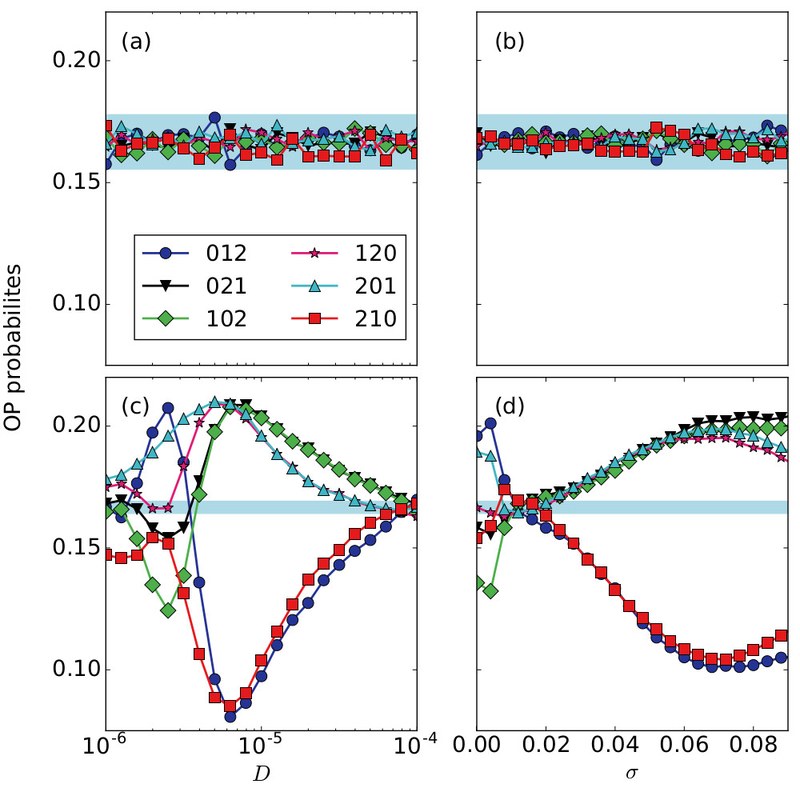María Masoliver Vila defends her thesis on neuronal coding of weak signals
Mar 03, 2020
María Masoliver defended her thesis supervised by Cristina Masoller on February 20 at the Terrassa Campus. Titled `` Neuronal encoding and transmission of weak periodic signals '', the thesis presents a temporal neuronal code based not on the time in which neurons trigger action potentials but on the relative time between them and demonstrates that it is a plausible mechanism for encode information from weak periodic external stimuli.
Sensory neurons use sequences of electrical pulses (known as action potentials or spikes) to encode and transmit information of external temporal stimuli. Neural coding is the research field that studies the relationship between external stimuli and neuronal responses. Since there is not a unique relationship between them, the mechanisms underlying neural coding are not yet fully understood. However, it is known that neurons use different mechanisms to encode external stimuli, which can be complementary or functional under different situations. An important issue is how neural noise (stochastic electrical fluctuations which do not carry any information) influences neural coding.
Here they focus on the response of noisy neurons to a weak and periodic external input. The signal is considered weak enough to be sub-threshold, i.e., by itself it does not induce spikes. However, neural noise triggers spikes, which encode the information of the weak signal. In this situation a encoding mechanism based on symbolic spike patterns has been been proposed for single (uncoupled) neurons; here we aim to determine if this mechanism is plausible for coupled neurons.
First, they use the FitzHugh-Nagumo model to study two coupled neurons. We consider the situation in which only one neuron perceives the weak signal (named as neuron 1). They characterize the role of the coupling on the encoding of the signal and they analyze the sequences of inter-spike-intervals of neuron 1 using the symbolic method (known as ordinal analysis), which can capture preferred and infrequent spike patterns (defined by the time interval between spikes). Indeed, they demonstrate that the encoding mechanism is robust to coupling: the neuron that perceives the signal fires a spike train that has preferred and infrequent spike patterns which carry information about the signal's amplitude and frequency.
Second, they apply ordinal analysis to the sequences of inter-spike-intervals generated by two coupled Morris-Lecar neurons. They investigate if different neuron types (regarding class 1 or class 2 excitability) generate similar spike sequences, and characterize the differences in signal encoding and transmission when changing the type of coupling (electrical or excitatory chemical synapses). They find that depending on the signal frequency, specific combinations of neuron/class and coupling type allow a more effective encoding, or a more effective transmission of the signal.
Third, They analyze the activity of an ensemble of neurons, when they all perceive the weak signal. We apply ordinal analysis to the spike sequences of all neurons and we demonstrate that a neuronal ensemble can also encode information of the signal in the form of preferred or infrequent spikes patterns, as one or two coupled neurons do. Also, they show that neuronal coupling is beneficial for signal encoding (because the neuronal ensemble detects signals of weaker amplitude) and that just few links among neurons can significantly improve signal encoding (because the probabilities of the preferred and the infrequent patterns take extremer values).
Taken together, the results presented in this thesis suggest that a temporal code based not on the precise timing but on the relative timing of the spikes of individual neurons is a plausible mechanism for encoding the information of weak periodic external stimuli.

Share: